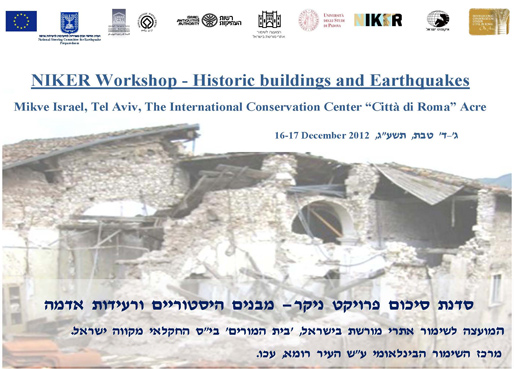An International Workshop for Engineers:
Earthquake Risks to Historic Buildings
“Beit Ha-Morim”, Mikveh Israel Agricultural School
The International Conservation Center – Città di Roma, ʽAkko
December16–17, 2012
In December 2012 an international professional workshop on the subject of earthquake risks to historic buildings was held in Israel. The main objective of the workshop was to raise awareness to the foreseen threat to heritage sites during an earthquake and of the need for advanced preparedness of when that will occur. The workshop was attended by seven experts from Italy, Spain, Portugal, Greece, the Czech Republic and Turkey, as well as eighty professionals from Israel.
The workshop was planned by the Israel Antiquities Authority on the occasion of the completion of the European Union’s NIKER Project, and as part of the preparation for the risks of earthquakes to heritage assets which the Israel Antiquities Authority is advancing in cooperation with the Geological Survey of Israel and the interministerial steering committee for earthquake preparedness headed by Dr. Avi Shapiro.










